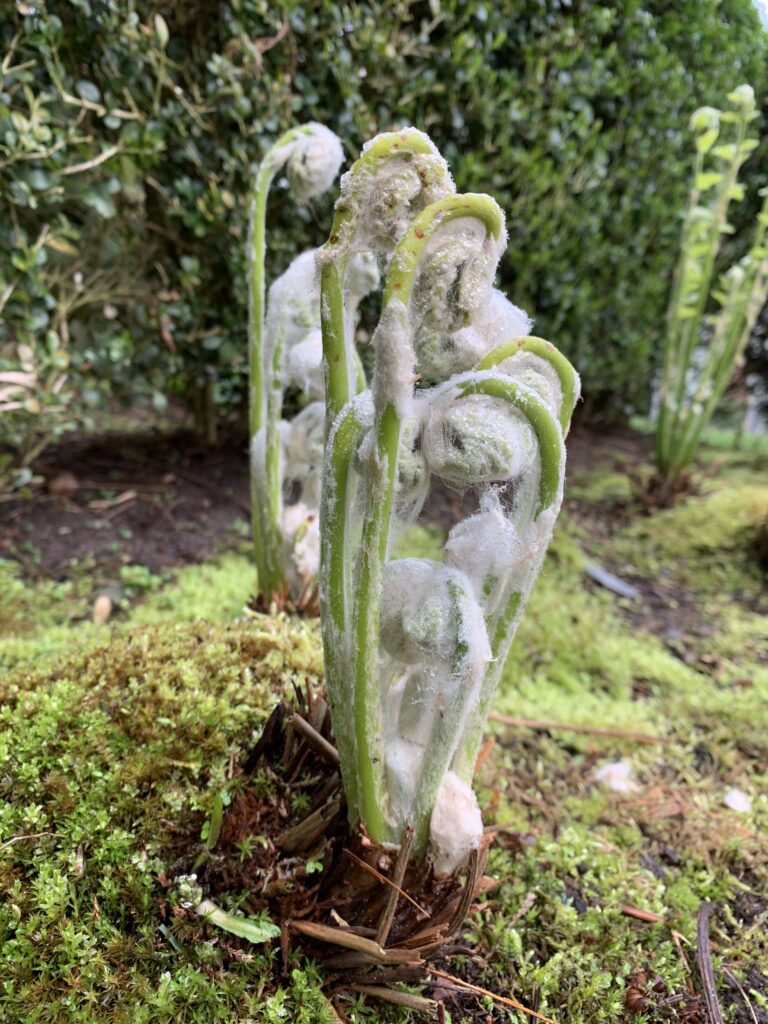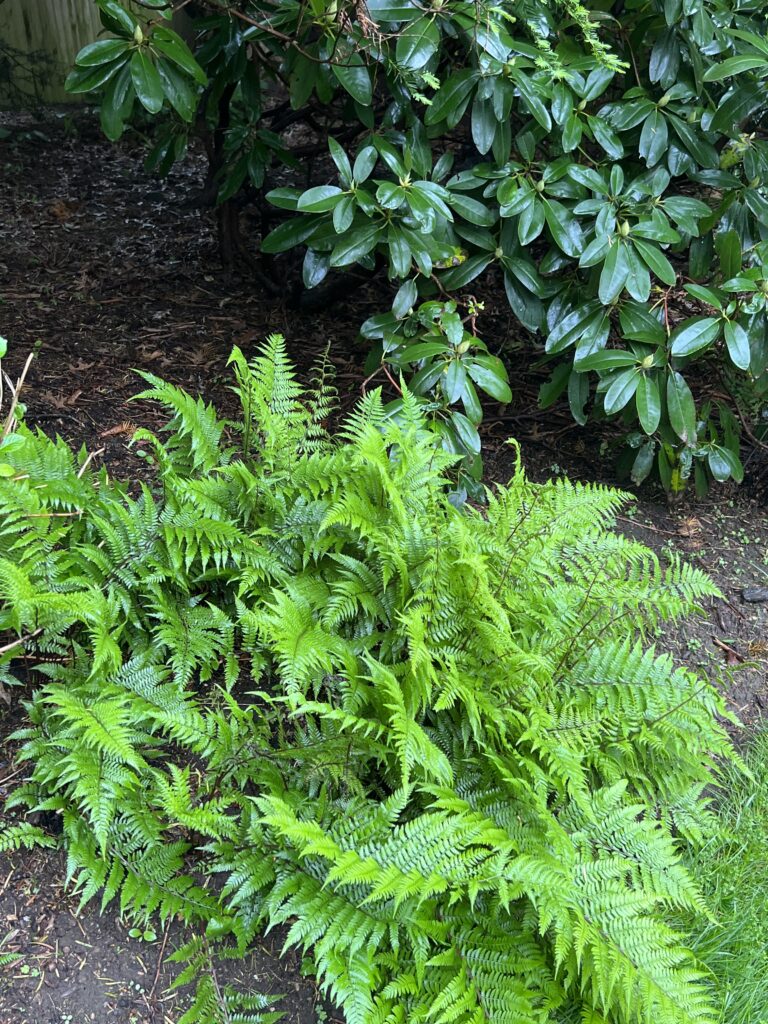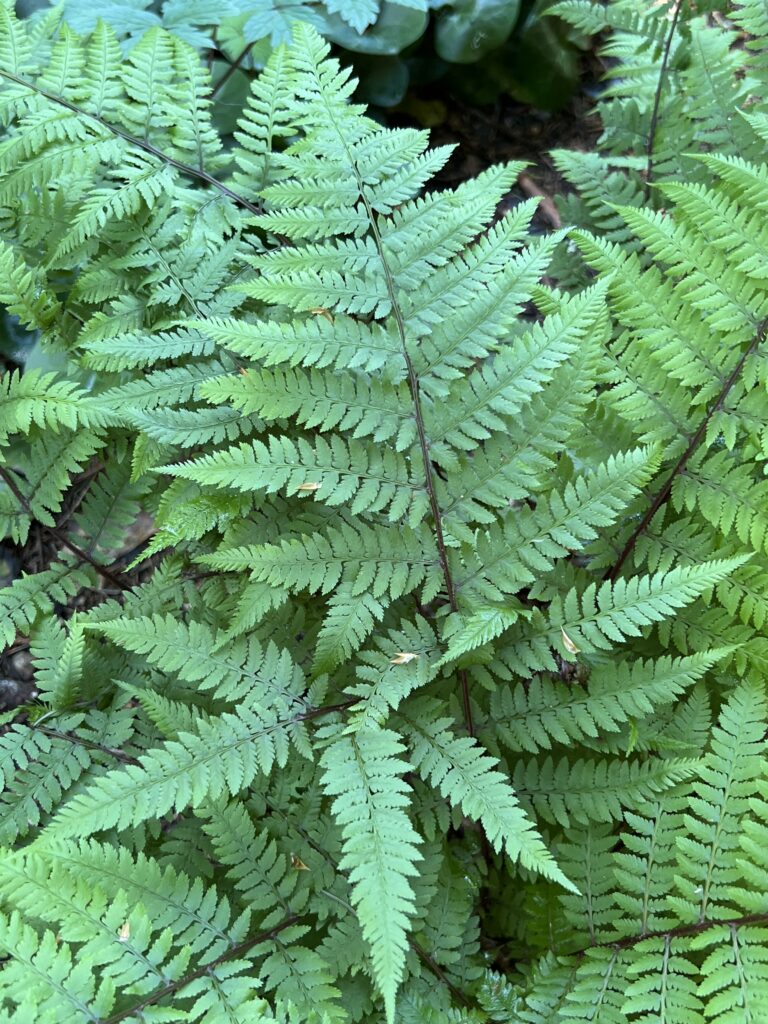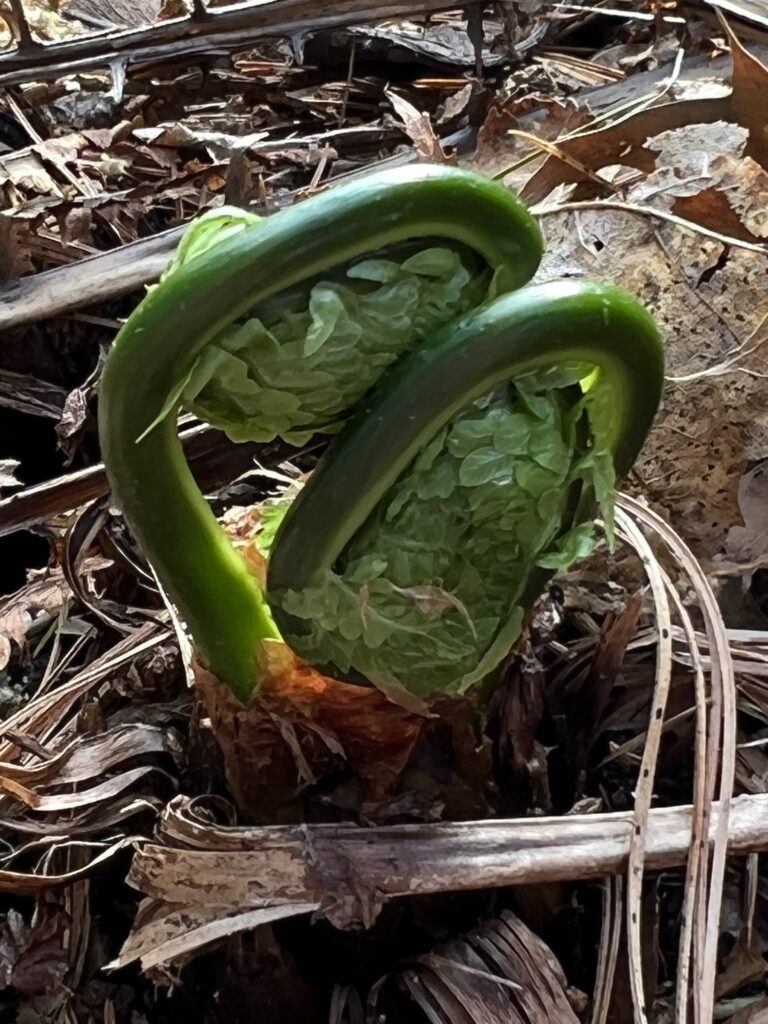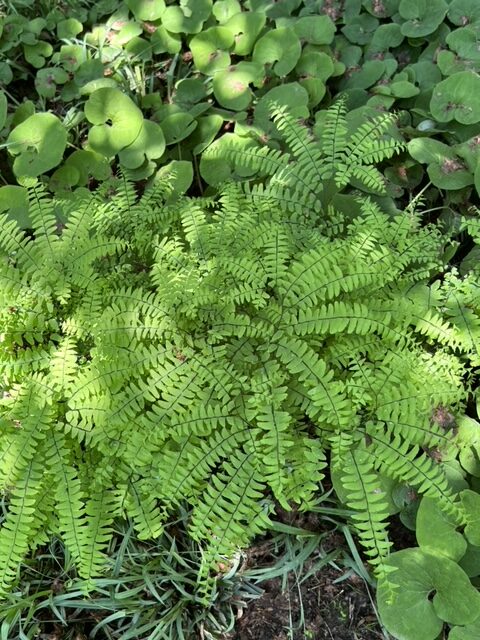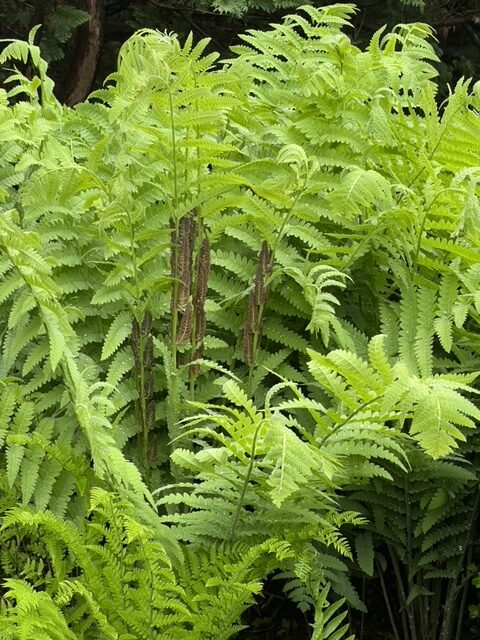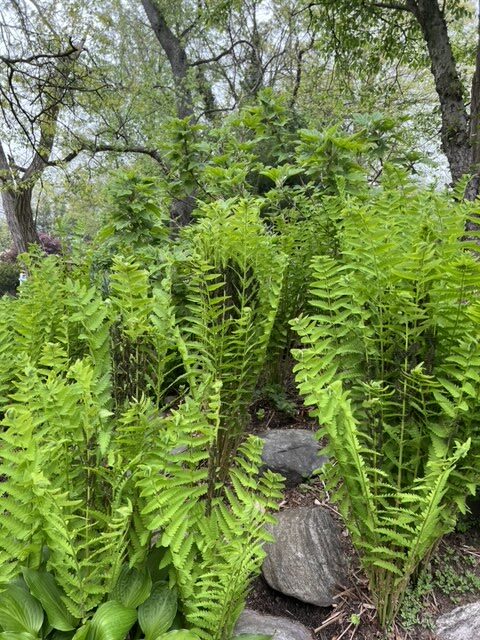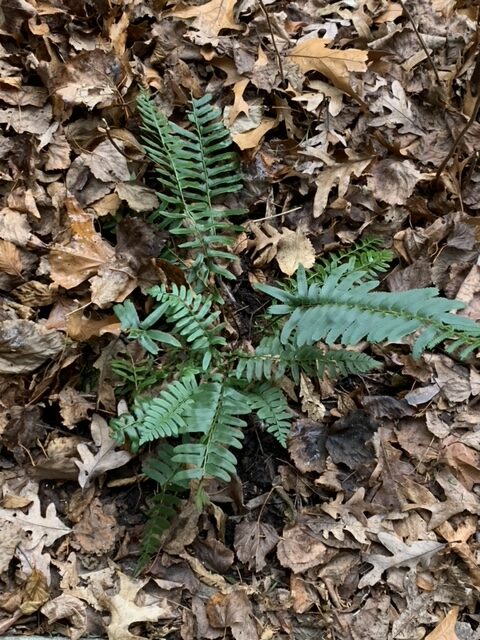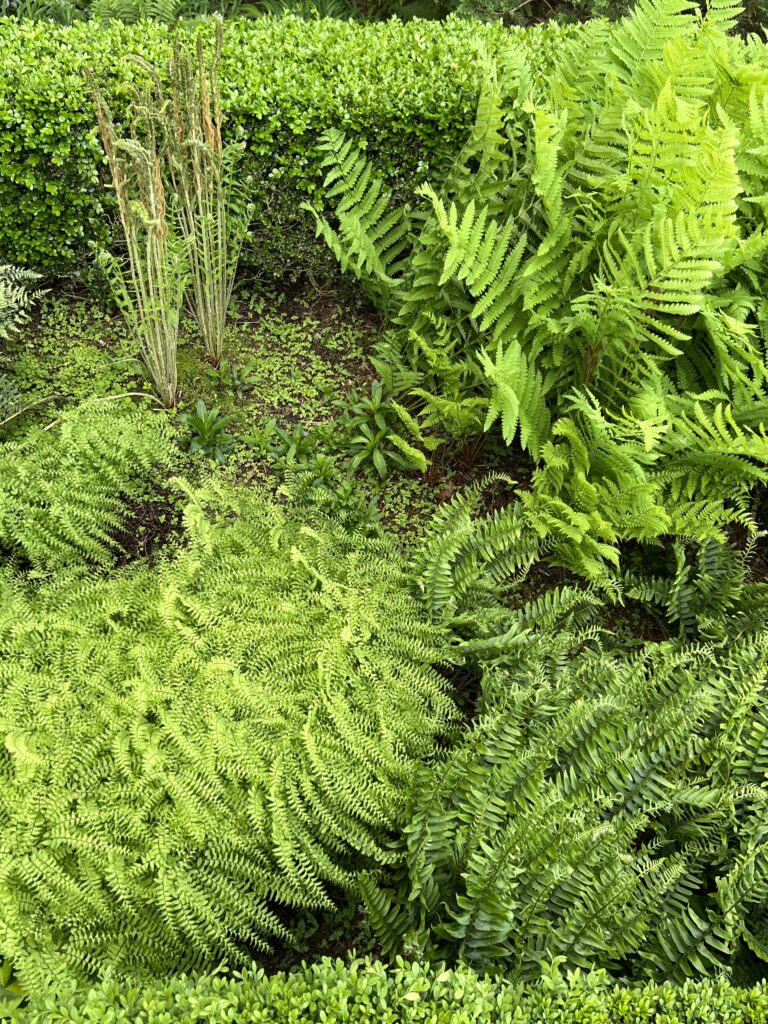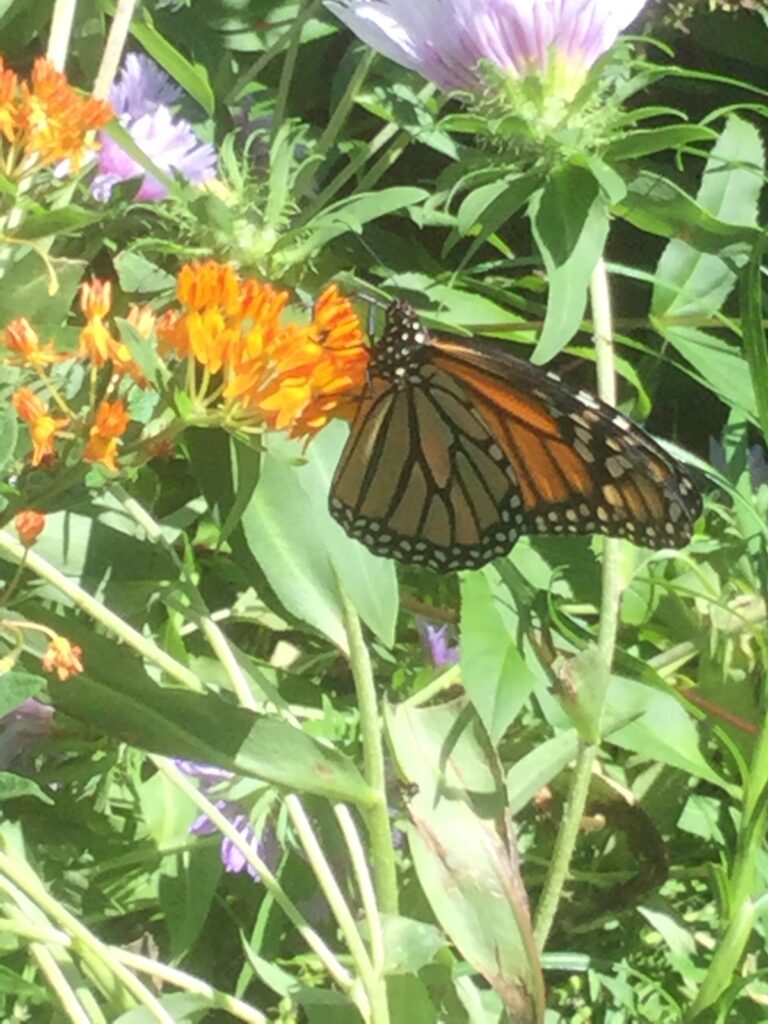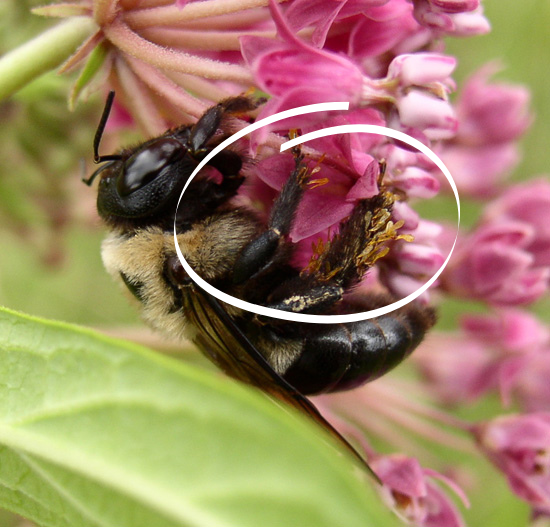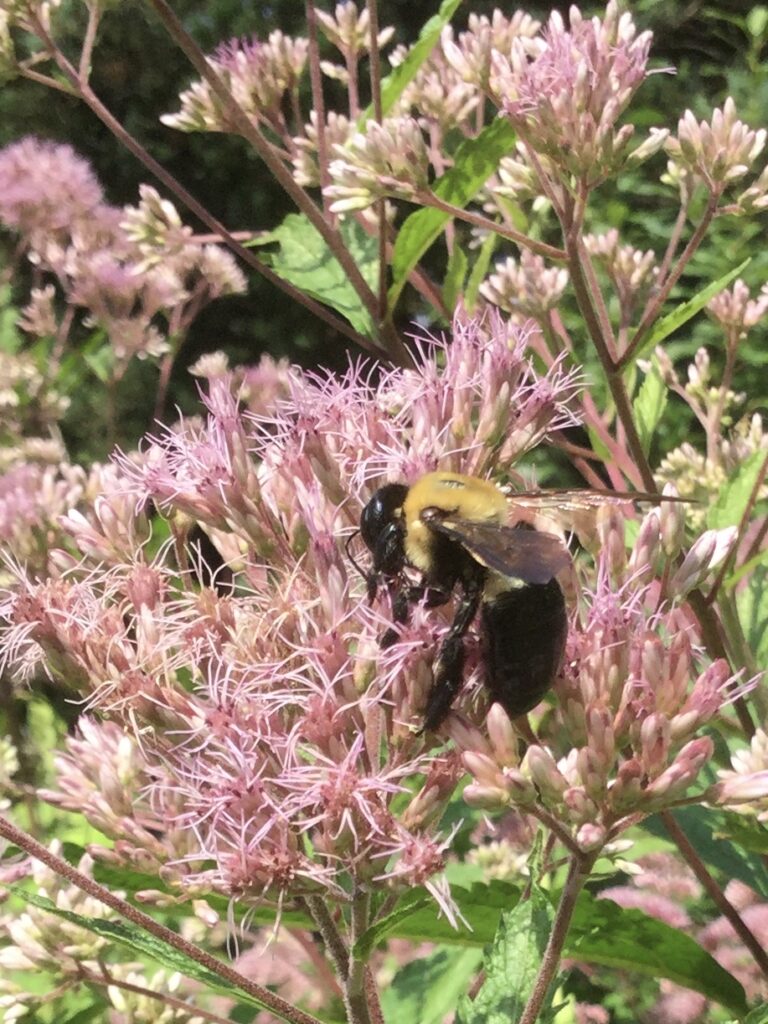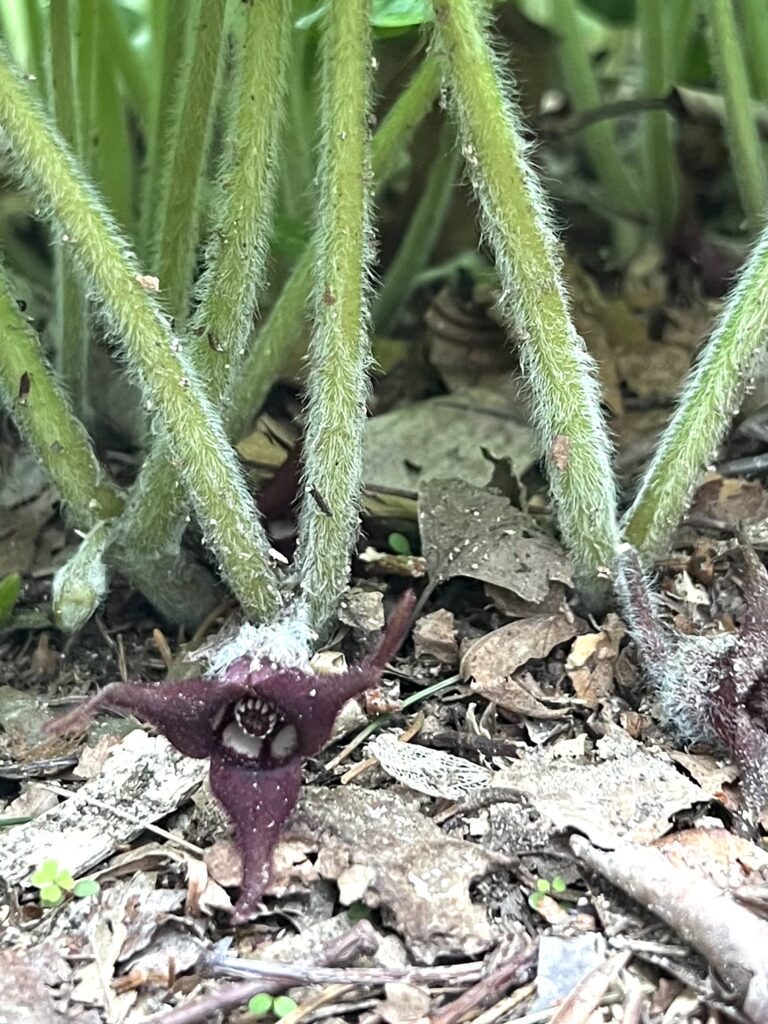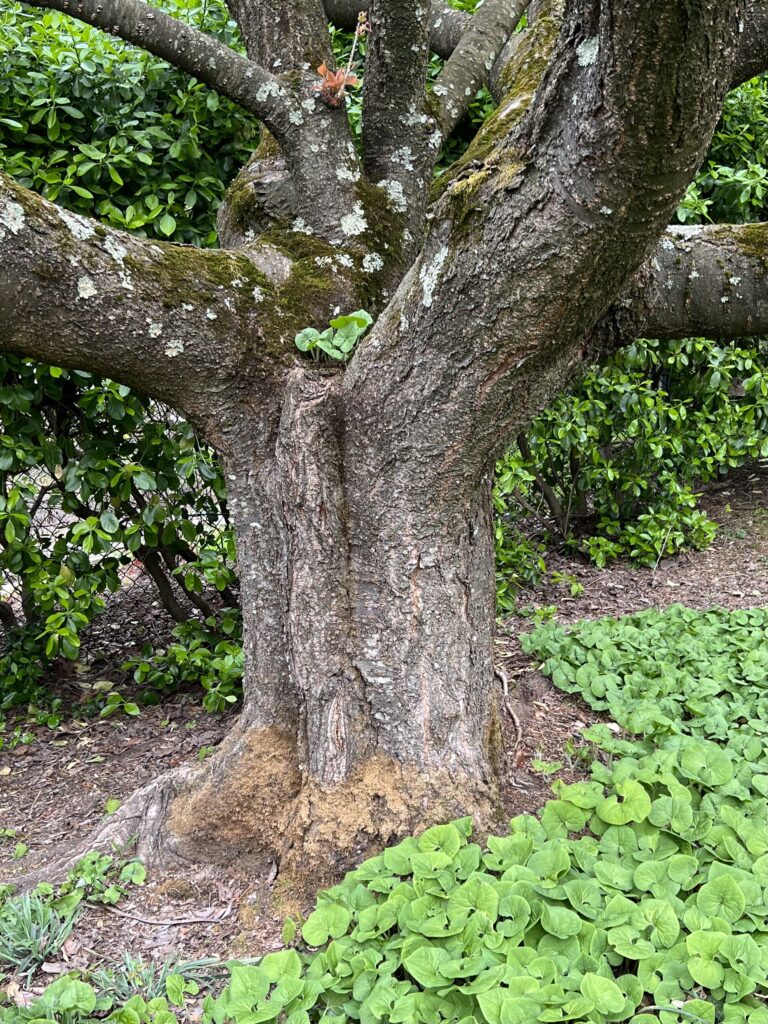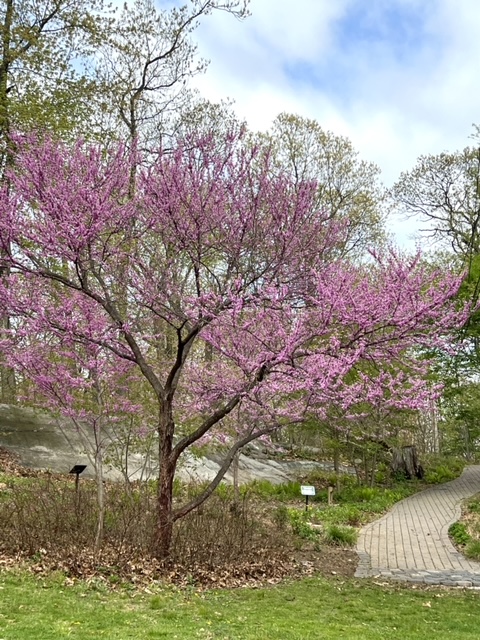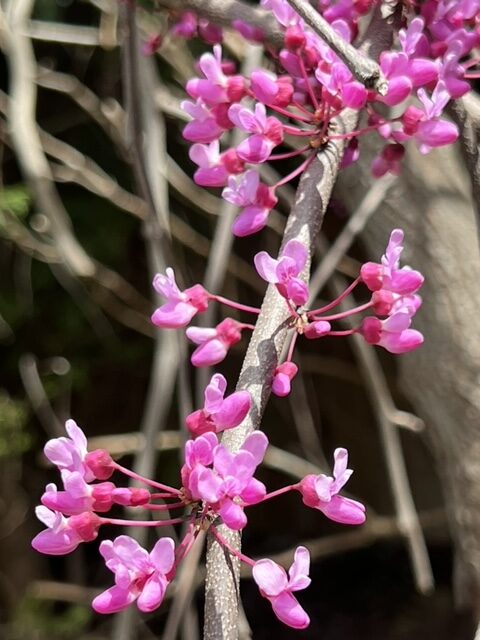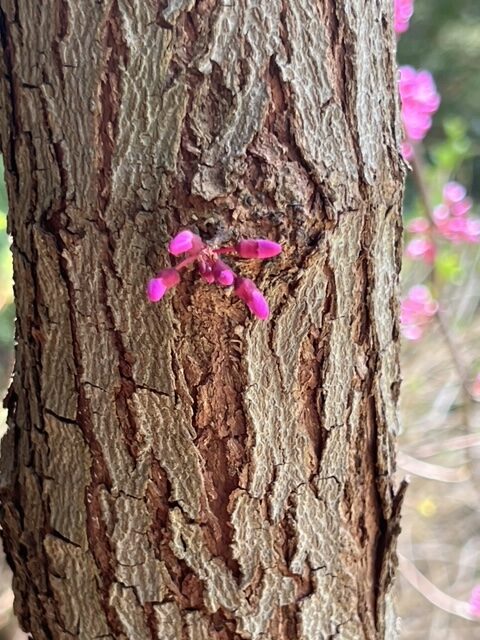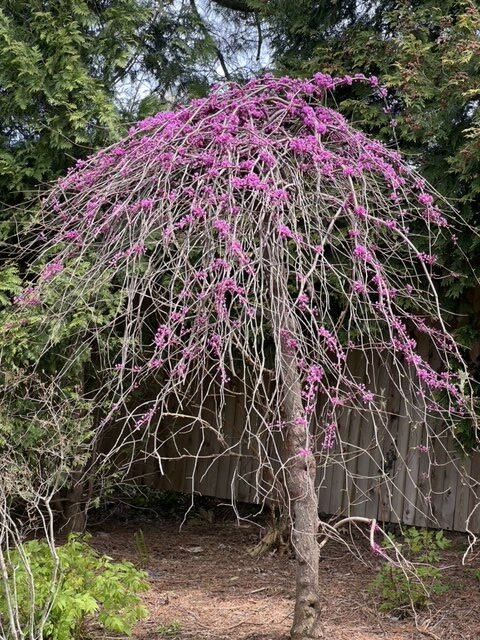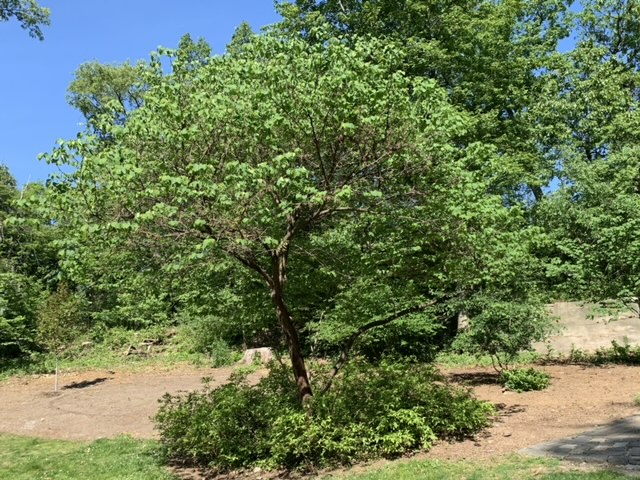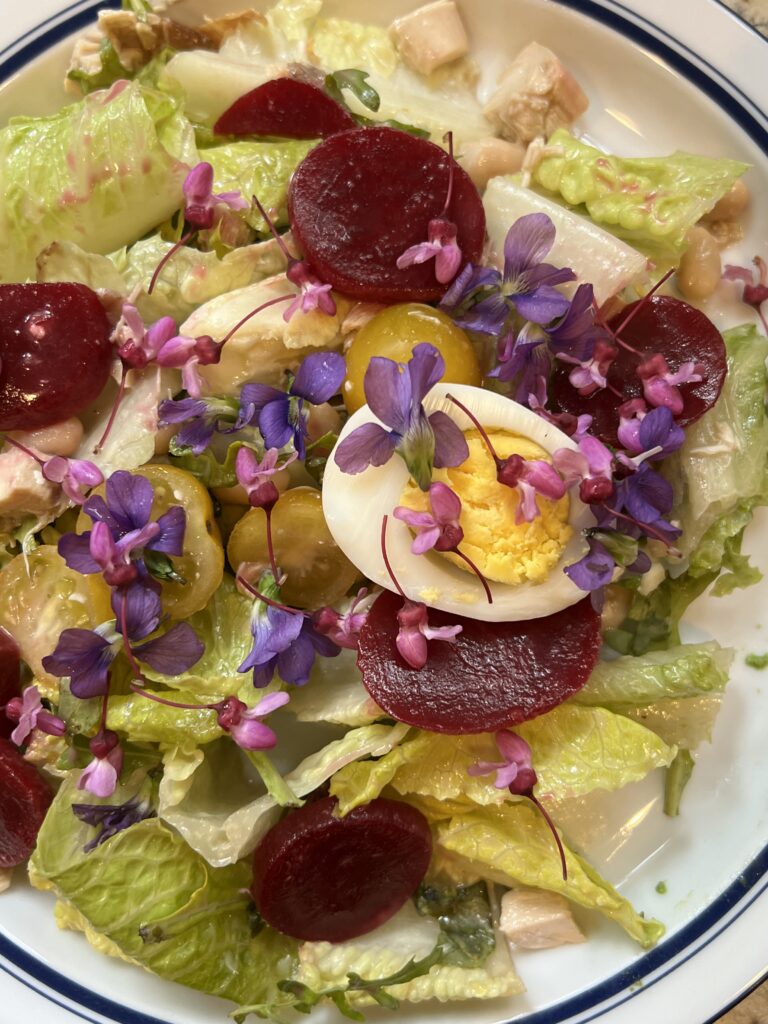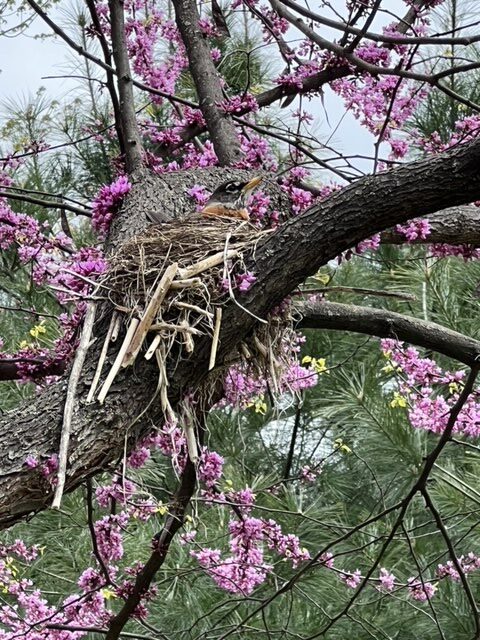
“Perennials” are plants that come back every year… at least in theory. In reality, some perennials are short-lived and only come back for a few years. Others may come back every year, but not necessarily where you planted them – they pop up in other places, or dramatically expand their territory. Some perennials need to be divided (split at the roots) to stay vigorous, or they will languish and stop blooming.
Baptisia (“Wild Indigo” or “False Indigo”), on the other hand, is truly perennial. There are documented cases of gardens, abandoned and neglected for over 30 years, where the only remaining original plant was Baptisia – still growing right where it was first planted, and still blooming.
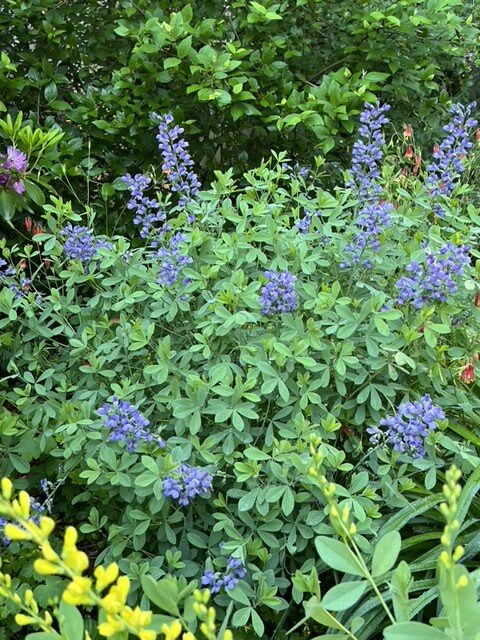
Baptisia is as beautiful as it is durable. It sends up vertical stalks loaded with flowers in May and June. All summer long, it acts like a shrub, 3 to 4 feet tall and wide, with blue-green foliage that remains fresh even in the hottest weather. In the fall, it produces attractive pods that add seasonal interest. The whole plant dies back to the ground after a few hard frosts, remaining unharmed by snow mounds or road salt throughout the winter. In spring, this reliable perennial definitely returns.
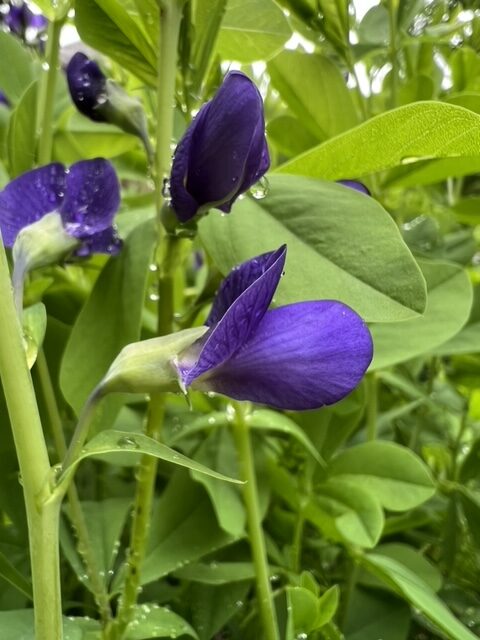
Baptisia evolved growing in open meadows and prairies. It is in the legume family, which explains the sweet-pea shape of the flowers. Like other legumes, Baptisia is nitrogen-fixing. Essentially, the plant manufactures its own nitrogen fertilizer, so it can live in very poor soil. Baptisia roots can extend 7 feet deep, even into hard-packed prairie, so it is drought tolerant.
Though Baptisia is easy to find in plant nurseries, you may be inclined to give it a pass when you first see it. It looks a bit like purple asparagus coming up in early spring. Because of its deep roots, nurseries can offer only very young plants, but a small plant will fill out dramatically after two or three years in the ground.
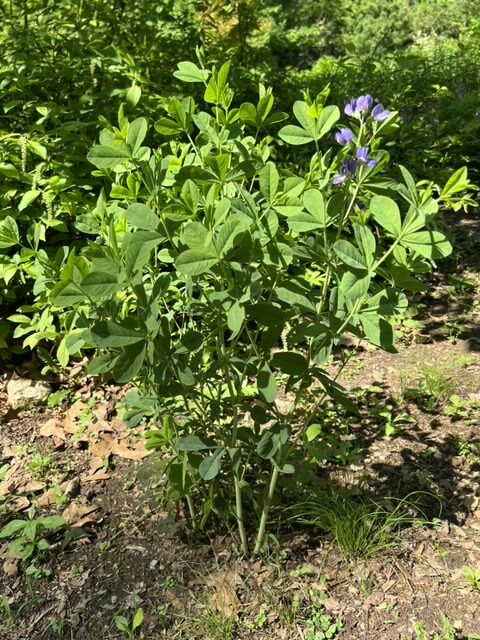
Baptisia is very low maintenance. It never needs dividing. In fact, once its deep roots are established, it really should not be moved or divided. The best bet is to buy container plants and give them enough room to mature undisturbed. Note, however, that the one non-negotiable for Baptisia is sun – 8 to 10 hours a day. Even very long-established plants will begin to fade if they become shaded by trees and shrubs. So, plan ahead when deciding where to site Baptisia.
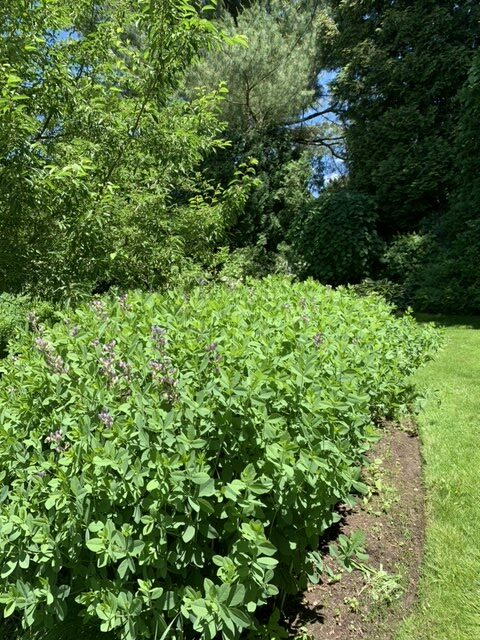
There is a lot to choose from in the Baptisia family these days – at least 3 garden-worthy species, plus hybrids and cultivars. Here are a few favorites:
Baptisia australis, or Wild Blue Indigo, is a species native to New York and always our first choice. Its natural habitat varies from moist woodland edges to open prairie. Its original native range extends south as far as Georgia and west from Nebraska to Texas. It likes our acidic soil, and is hardy in Zones 4-9. It is not generally attractive to deer, and it is the host plant for the Wild Indigo Duskywing butterfly.
Baptisia sphaerocarpa (Yellow Wild Indigo) is not native to New York, but is native farther west and south from Missouri and Oklahoma to Texas. Baptisia alba (White Wild Indigo) is native in the Southeast from Virginia to Florida. Both of these Baptisia species are winter hardy to Zone 5, and do well in New York gardens.
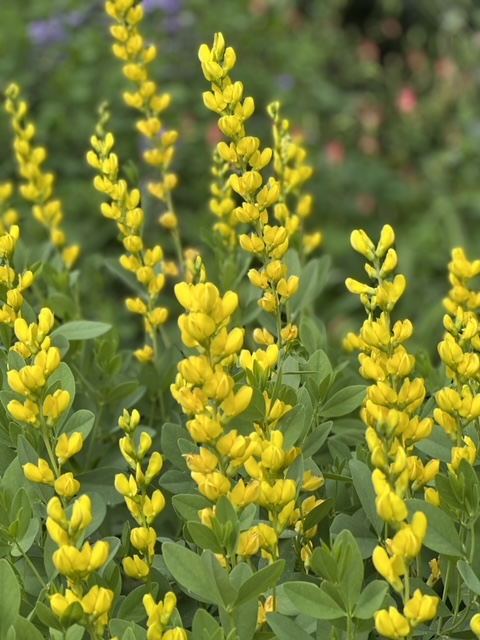
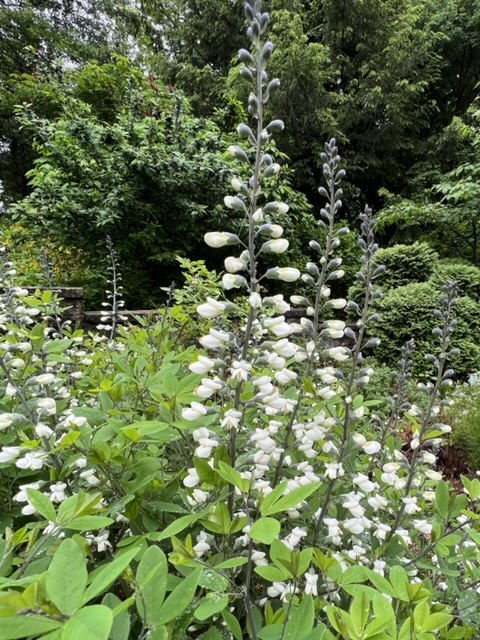
Interestingly, these three Baptisia species have yielded natural hybrids resulting in some very beautiful flower color variations. Hybrids called ‘Purple Smoke’ and ‘Twilight Prairie Blues’ are often available and seem to perform as well as the species.
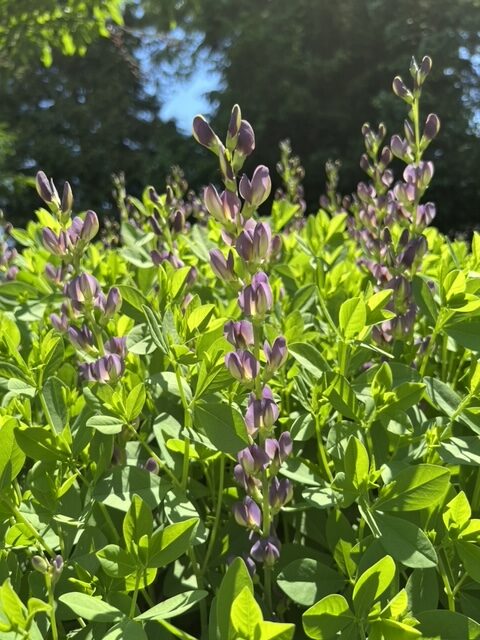
New cultivars have been developed by growers and are sold under various names such as ‘Lemon Meringue,’ ‘Dutch Chocolate,’ and ‘Cherries Jubilee.’ Whether these cultivars provide the same benefits to wildlife as the species is unknown.
So, if you want a true perennial that will come back every year, never need dividing, never need fertilizing, and will be beautiful for many years to come, try Baptisia!




